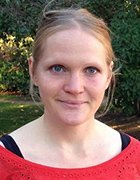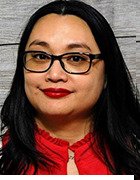
osorioartist - Fotolia
Nordic CIO interview: Tore Burheim, University of Bergen
IT director of Norwegian university tells Computer Weekly about digitising education and creating co-operative clusters
The University of Bergen in Norway, with 14,500 students and 3,600 staff, is digitising its educational processes, including exams and other assessments.
“Universities in Norway have been very, very slow in this area,” University of Bergen IT director Tore Burheim told Computer Weekly.
Until two years ago, almost all exams at the university were conducted with paper and pens, says Burheim. “But now we are up to 55% digitised. It works like an extreme form of the concept of bring your own device. The students bring their own computers, then we lock them down so they cannot use anything apart from a special web browser they have downloaded earlier. We freeze access to hard drives and the internet.”
The system is based on an open source browser. “But we are using a commercial provider, which provides the system to us as software as a service,” says Burheim. “We have done necessary integrations into the student and administration systems, but we have tried to keep it simple to begin with.”
Every year, 48,000 exams are taken at the university, and even though the technology is not too complicated, digitising them is not easy, he says. “It is a huge logistical task, and a major operational change for the university. We do not have the capacity to make all exams digital in one big bang.”
Earlier this year, the focus was on the organisational part of the operation, and the percentage of digitised exams has not increased that much, says Burheim. “But our goal is to have almost 100% digitised exams next year,” he adds.
There are great benefits to be had from digitised school exams, says Burheim. “The students are used to using computers, so they are more efficient when using them during exams,” he explains. “Some even claim that the quality of the work increases, because it is easier for students to edit their texts on computers. Another important benefit is that digitised exams are much easier to read when grading them.”
Another vital part of the university’s move to digitise its education is a new learning management system, says Burheim. “It is a software system for documentation, tracking, reporting, sharing documents in a class, handing in homework, and any kind of e-learning. In short, a system where teachers and students share and work together.”
Learning management system
The learning management system was selected and implemented within a year. “Universities often spend several years changing learning management systems, but we chose to do it in a rather disruptive way,” says Burheim. “The reason is that we believe speed is extremely important nowadays, and our users and management expected it to be done this quickly.”
The new learning management system is open source, and Burheim plans to build innovations and tailor-made solutions on top of it. “We are doing it together with the business world and the research world, in clusters that we are creating,” he says.
Establishing these clusters is a very important project for the university, which hopes it will derive many different benefits from them. “The university adopted a new strategy last year, and building and using clusters within different industries is at the core of it,” says Burheim.
“We are, for example, establishing the cluster Media City Bergen, which will comprise some university departments, a learning centre, Norway’s biggest commercial television broadcaster, some newspapers and a number of media industry technology providers.”
Read more Nordic CIO interviews
- The CIO at power tool maker Husqvarna tells Computer Weekly how he is repositioning the company through digitisation.
- CIO of Swedish fast-food chain tells Computer Weekly how digital technology is increasing sales and supporting expansion.
- Interim CIO of Swedish family law and funeral group Fonus talks about his role as a “chaos pilot”.
- CIO of Swedish hygiene and forest products company discusses how digital technology is changing the firm and how he manages this transformation.
- Finnair is on a digital transformation journey and the airline’s CIO is changing the IT department as it progresses.
The university is also planning clusters in other areas, such as health science and climate change, says Burheim. “IT’s role in these clusters is as a technology provider and integrator. We are going to use the participants’ technology and know-how to create common ground for research and innovation.
“The university will benefit greatly. The buildings for Media City Bergen will be ready next summer, and the climate change cluster is also under construction. The university is currently focusing very strongly on the clusters.”
“Our goal is to have almost 100% digitised exams next year”
Tore Burheim, University of Bergen
The biggest challenge Burheim faces going forward is transforming the university’s IT department. “I want my organisation to change from working only within a traditional, long-term, stable, predictable mode,” he says. “We should also work in an agile, exploratory, innovative mode.
“We want to move the IT department’s focus from operations of established and legacy systems, to helping the university reach its goals. We are going to be more focused on helping the university increase its revenue, and we will focus more on interactions and higher speed.”
The IT department is being transformed by training its 100 employees, says Burheim. “Since we are a public organisation, I cannot just replace people. I have to take care of the employees, and my staff are my most important assets.
“So we focus on helping them, and quite a bit of the transformation is driven from the bottom up. It is agile and lean-based.”
Outsourced systems
Systems that the University of Bergen has outsourced include enterprise resource planning (ERP), payroll and some administration systems. “All Norwegian universities have a common student administration system,” says Burheim.
The university has decided on a hybrid cloud strategy and is moving technology to the cloud, he says. “This is very important to us because it increases cost-efficiency and flexibility,” he adds.
Another substantial task under way is to establish a platform for the internet of things, which is being done with the research society, says Burheim. “We are creating a connected value chain, all the way from the lab to the research paper,” he explains. “It starts with sensors collecting data from the lab, and then we have to store the data, make calculations on it and provide research data to third parties.”
This work will take many years, he says. “We have to support everything, from documents that are 1,000 years old to electrode-based brain research. This means we cannot standardise on one platform and process. It is a huge challenge.”










